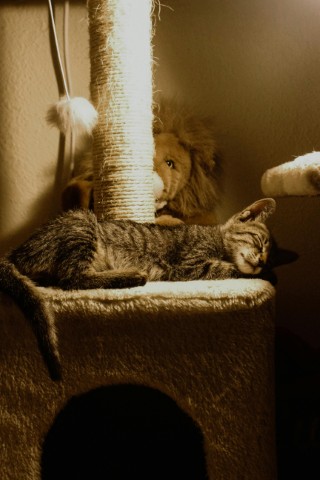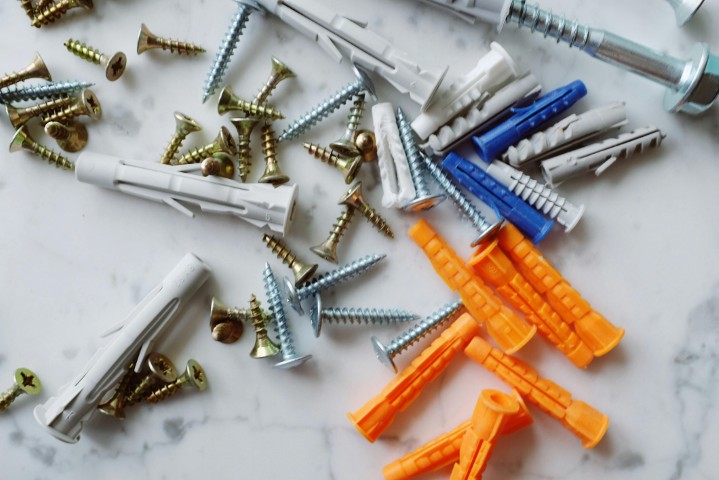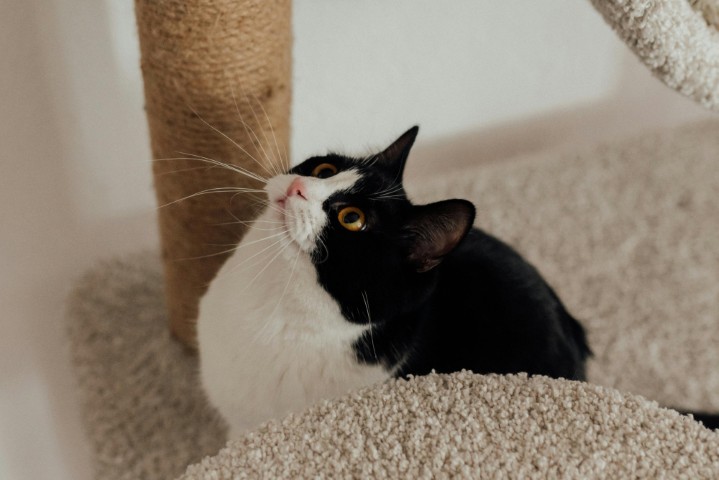Wobble happens—even with good cat trees. The goal isn’t perfection; it’s confidence for your cat. Use these quick wins to improve stability right now, then make small upgrades if you need more support.
Table of Contents
Corner Placement & Traffic Flow

Why it works: Walls act like stabilizers. A tree tucked into a corner has less side-to-side sway, and most cats feel braver when a wall is at their back.
Do this now (1 minute):
- Move the base so two sides touch the walls (or one wall if a corner isn’t possible).
- Place it near a window or “people zone” where your cat already hangs out.
- Leave a clear path to the lowest perch—no leaping over baskets or ottomans to get on.
Good to know: If you have multiple cats, give them two routes up and down (front and side) to prevent “stairway standoffs.”
Base Grip: Pads, Rugs, and Carpet Tricks
A slippery base = instant wobble.
Try one of these:
- Grippy pads under the corners (rubber furniture pads or a non-slip rug underlay cut to size).
- A thin, low-pile rug under the base (thick plush rugs can add wiggle—avoid if your tree is already wobbly).
- On slick tile or hardwood, a rubber shelf liner sheet trimmed to the base works wonders.
If your room has plush carpet: Choose trees with wider bases (or add a thin plywood platform under the tree to “spread the load”—sand edges, no sharp corners).
Level Checks: Floors, Shims, and Tightening
Even a small tilt can make a sturdy tree feel shaky.
30-second check:
- Press on each corner of the base. If one corner floats, your floor isn’t level.
- Slide a felt pad or folded cardboard under the floating corner to shim it level.
Tighten everything:
- Re-tighten bolts and connectors (especially after the first week—materials settle).
- Check posts for rotation; if a post spins, re-seat and tighten.
When To Add Wall Anchors (And How)

You likely need anchors if:
- The tree is tall (near ceiling height)
- Your cat is heavy/athletic and launches off perches
- The base is narrow for the tree’s height
Safer options (choose one):
- Anti-tip furniture straps into a stud (best).
- Toggle bolts for drywall only if studs aren’t reachable and your wall allows it.
- Renter-friendly: Look for removable straps that screw into the tree and hook under a wall bracket that’s anchored into a stud with a single screw (easy patch later). Adhesive-only anchors can fail under dynamic load—avoid for tall trees.
Placement:
Attach the strap high on the tree’s trunk (not a flimsy shelf). Strap should be snug, not guitar-string tight. Allow a tiny bit of give so the tree doesn’t hum with tension.
Post Diameter & Materials: What Actually Helps
General rule: thicker posts + denser materials = less wobble.
- Post diameter: For big cats, aim for ~3.5 in (9 cm) or thicker posts.
- Core material: Solid wood resists flex better than thin MDF or hollow tubes.
- Rope & fabric: Natural sisal rope grips and lasts; plush carpet adds comfort but can hide loose bolts—check under the fluff.
- Base size: Wider and heavier bases resist tipping; if you’re on plush carpet, go wider.
Quick Fixes By Floor Type
Hardwood/tile:
- Non-slip rubber underlay or pads at corners
- Avoid felt pads alone (they slide)
Laminate:
- Underlay + gentle wall anchor if the tree is tall
Carpet (plush):
- Wider base or a thin plywood platform under the base
- Shim where needed to level
Kittens & Seniors: Extra Safety

Kittens: Lower perches, staggered steps, and a clear landing zone. Add a small rug in the “departure zone.”
Seniors: Prefer low-jump platforms and sturdy ramps. Keep food/water and litter separate from landing zones.
Helpful paths:
- Kitten picks →
- Senior picks →
Monthly 2-Minute Safety Check
- Wobble test: push from each side—any new sway?
- Bolts & caps: quick tighten; replace missing caps.
- Rope & fabric: frays that catch nails? Trim or replace.
- Base wear: pads still grippy? Replace if glass-smooth.
- Anchors: strap intact; screw still snug into stud.
Set a reminder on the 1st of the month. It truly takes two minutes.
Common Mistakes to Avoid
- Placing a tree in a dead zone your cat never visits
- Using a fluffy rug that acts like a trampoline
- Anchoring to drywall only with light-duty hardware
- Over-tightening to the point the tree creaks (micro-shifts can loosen hardware)
- Ignoring a spinning post—tighten or re-seat it
When It’s Time to Replace Parts (Or the Tree)
- Loose joints that won’t stay tight
- Cracked platforms or posts
- Sisal worn to the core with exposed sharp edges
- Persistent wobble even after shims and anchors
If you’re replacing:
- Compare base width, post diameter, and height on your shortlist.
- See heavy-cat friendly picks →
Click Here - Or browse deals →
Click Here - Side-by-side specs →
/index.php/compare/
Do I always need wall anchors?
Not always. If your tree is short, has a wide base, and your cat is gentle, solid placement + grip is often enough. For tall trees or athletic cats, anchors are the safest upgrade. (Plan for a stud anchor when possible.)
How do I stop sliding on hardwood floors?
Use a non-slip rubber underlay trimmed to the base, plus corner pads if needed. Felt sliders make things worse so you can skip them as far as cat trees are concerned.
What post diameter is best for heavy cats?
Thicker is better. Around 3.5 in (9 cm) or more feels notably steadier. Pair it with a wide base and good placement.
Can I put a tree on a thick rug?
You can, but it often wobbles more. Try a wider base or a thin plywood platform between the rug and the tree, or move to a firmer surface.
Keep Learning
- Train your cat to use a tree →
/index.php/education/train-your-cat-tree/ - Best cat trees for small apartments →
/index.php/by-space/small-apartments/ - Best cat trees for Maine Coons & heavy cats → /index.php/by-cat-type/maine-coon/